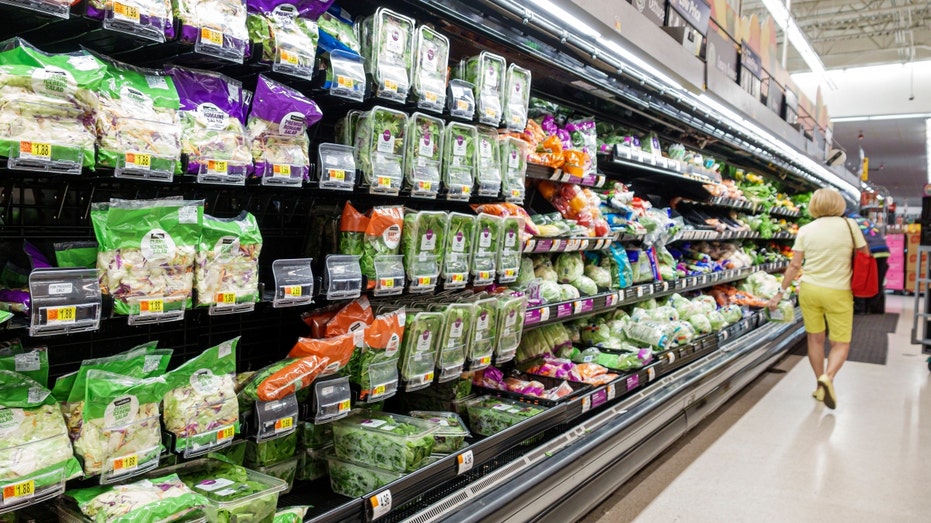Bussiness
‘Unhealthy dose’ of pesticides found in popular produce, new report reveals

Check out what’s clicking on FoxBusiness.com
About 20% of all fruits and vegetables examined by Consumer Reports in a new report revealed an “unhealthy dose of dangerous pesticides.”
Consumer Reports published the report — its “most comprehensive review” of pesticides in food to date — after analyzing 59 common fruits and vegetables, which included fresh, canned, dried and frozen products.
“Our new results continue to raise red flags. Pesticides posed significant risks in 20 percent of the foods we examined,” Consumer Reports said.
Bell peppers, blueberries, potatoes and strawberries were included in the report, as well as green beans, which “had residues of a pesticide that hasn’t been allowed to be used on the vegetable in the U.S. for over a decade,” according to the report.
“Imported produce, especially some from Mexico, was particularly likely to carry risky levels of pesticide residues,” the organization said.
CHLORMEQUAT: WHAT IS THE CHEMICAL FOUND IN CHEERIOS, QUAKER OATS?
Consumer Reports analyzed seven years of data from the Department of Agriculture, which every year tests a selection of conventional and organic produce grown in or imported to the U.S. for pesticide residues.
Certain chemicals are used by farmers to control bugs, fungi and weeds. However, some of these chemicals carry “unacceptable health risks.”
Blueberries were among the fruits included in the report. (Stefan Sauer/picture alliance via Getty Images / Getty Images)
Consumer Reports said that certain “notorious pesticides, such as DDT, have been banned in the U.S.” but claimed that government regulators have been slow to ban others. Additionally, the outlet argued that when a dangerous chemical is removed from the market, chemical companies and growers, in some cases, start relying on “other options that may be as dangerous.”
Consumer Reports said that it has been tracking the use of pesticides on produce for decades and has “seen this pattern repeat itself over and over.”
GET FOX BUSINESS ON THE GO BY CLICKING HERE
On the other hand, it said pesticides “presented little to worry about in nearly two-thirds of the foods,” which included nearly everything that was organic.

Red and green bell peppers in California. (Ed Young /Design Pics Editorial/Universal Images Group via Getty Images / Getty Images)
According to Consumer Reports’ analysis, “the largest risks are caused by just a few pesticides, concentrated in a handful of foods, grown on a small fraction of U.S. farmland.”
Understanding the risk
According to its analysis, about 16 of the 25 fruits and about 21 of the 34 vegetables tested showed low levels of pesticide risk. This means that kids and those who are pregnant can safely consume more than three servings a day of those foods, Consumer Reports food safety experts said.
Ten foods were of moderate risk. This means up to three servings a day were safe to consume.
A dozen foods “presented bigger concerns.” This means kids and pregnant women should consume less than a serving a day of high-risk fruits and vegetables. They should also consume less than half a serving per day of very high-risk ones, Consumer Reports said.
“Everyone else should limit consumption of those foods, too,” it said.
Consumer Reports created a list of six conventionally grown fruits and vegetables where pesticides pose a serious problem and possible substitutions for them.
1. Blueberries
Substitutions: organic blueberries did well and fresh domestic strawberries fared okay.
2. Bell Peppers
Substitutions: organic bell peppers are the best choice or to consume this food “sparingly.”
Hot peppers also posed a “high risk,” Consumer Reports said.
3. Potatoes
Substitutions: sweet potatoes pose a low risk.
4. Green Beans
Substitutions: snap peas pose a low risk. Organic green beans grown domestically are also a good substitute.

Produce and prepackaged salads in a store. (Jeff Greenberg/Education Images/Universal Images Group via Getty Images / Getty Images)
5. Kale and Mustard Greens
Substitutions: organic kale and mustard greens as well as broccoli all pose a very low risk.
Fresh spinach, which is also a better choice, poses a moderate risk.
6. Watermelon
Substitutions: organic watermelon. Cantaloupe also poses a very low risk.









